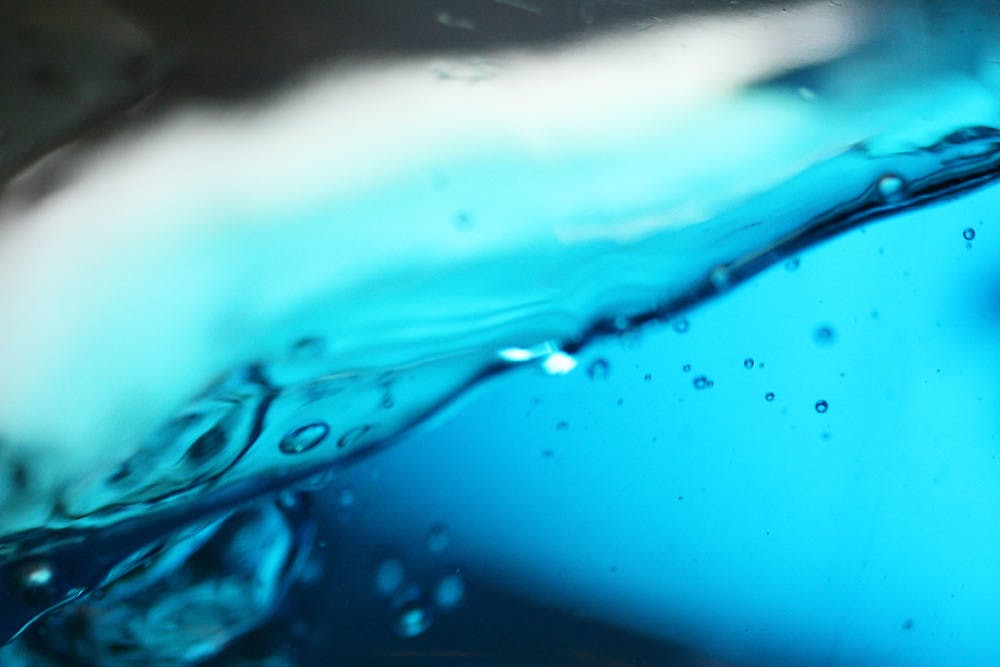Despite being essential, our water sources are filled to the brim with contaminants. From cancer-causing chemicals to endocrine disruptors, our drinking water is becoming more and more unsafe as myriad chemicals find their way into our infrastructure and treatment centers. Solving this problem has been Carsten Prasse’s life work.
Prasse, an assistant professor of environmental health and engineering in the School of Engineering, has spent the last decade investigating water systems and their contaminants and engineering solutions to the ever-growing problem of pollution. He discussed this research in an interview with The News-Letter.
“We're focusing on a very small number of compounds that have been regulated for a long time. We know, based on research of the last one to two decades, that there are many more chemicals in drinking water because we are emitting them into the environment,” Prasse said. “When we think about drinking water, the protection of the consumer should obviously be of the highest priority, and it's clearly not right now.”
Most recently, Prasse and Paul Feraro, Bloomberg distinguished professor of human behavior and public policy, have proposed a new way to ensure safe drinking water systems: the Mixture, Assay, Measure, Innovate (MiAMI) approach.
Presented via an August 30 Perspective piece in Nature Sustainability, MiAMI promises to keep drinking water safe. Ferraro explained MiAMI in an interview with The News-Letter.
“MiAMI seeks to completely change the way we keep our drinking water safe by leveraging advances in bioassays, the measurement of complex chemical mixtures and artificial intelligence to enable the creation of engineering and policy solutions,” Ferraro said. “MiAMI uses what we have — complex mixtures of water and thousands of other compounds — rather than what we don’t have — a catalogue of every compound and its potential risks that could be found in every drinking water system. It allows us to tailor solutions to each drinking water system rather than try to establish solutions that work for every case.”
The most crucial technological component of MiAMI is bioassays. Bioassays are a measurement method that determine the toxicity of a system by measuring its effects on living cells. While they are unable to detect individual chemicals, they are able to capture the broad impacts of the chemicals present in the mixture.
“[From here], we can use advanced analytical techniques to actually identify chemicals that you might not have known that they are present in the water, and we can detect thousands of these compounds in a single sample,” Prasse said. “We have targeted analysis and non-targeted analysis. Targeted analysis is what we've been doing so far: You have a standard of a compound that you expect to be in the water, then you determine the concentration of this compound. But that doesn't allow you to identify what other chemicals might be in there. That's kind of the non-targeted side of things.”
However, this analysis takes time; thus, the ultimate goal is to engineer treatments that can be administered to a water supply given a particular bioassay response. Prasse explained that such treatments already exist for specific compound sets, such as endocrine disruptors, yet many more remain to be developed.
“Endocrine disruptors interfere with your hormone system... We already know from existing research that there are certain treatment technologies that can get rid of them, meaning if you would have a bioassay that says, ‘Okay, you have these endocrine disruptors in the water,’ what we have right now is ‘Treatment X can work,‘” Prasse said. “The idea is that what we have for this one endpoint, we might eventually have for all the endpoints.”
While the groundwork of the scientific tools behind MiAMI has been laid, there are still advances needed to bring it to fruition. These include the development of more sensitive bioassays and analytical techniques, but more importantly, public and political support.
“The main components for implementing MiAMI already exist, but no one has implemented the version that we articulate in the article,” Ferraro said. “An idea like MiAMI is not going to be widely adopted until two things happen: One, scientists work out some of the details we identify as necessary for implementing MiAMI at scale and two, MiAMI finds one or more champions inside the federal government who can do the hard work of translating science in[to] politically feasible and actionable policy and program actions.”
Prasse and Ferraro explained cost tradeoffs in the perspective piece.
“Even when costs are not higher, they may be perceived as being higher because the status quo ignores the health costs of unknown and unaddressed contaminants in drinking water systems; in other words, the status quo may seem cheaper, but only because a full assessment of its costs is impossible when regulators are ignorant about the potential threats in drinking water mixtures,” they wrote.
This is the heart of MiAMI: While it aims to serve as a model for the future, its true purpose is to start a conversation about the importance of maintaining safe water systems.
“What we really want to reach with this is to have a broader discussion about how we can make this become reality, either [with] what we propose or at least [with] a system that is protecting human health [more] than it is right now,” Prasse said. “People need to see that drinking water quality is important and it's okay to invest in it.”





